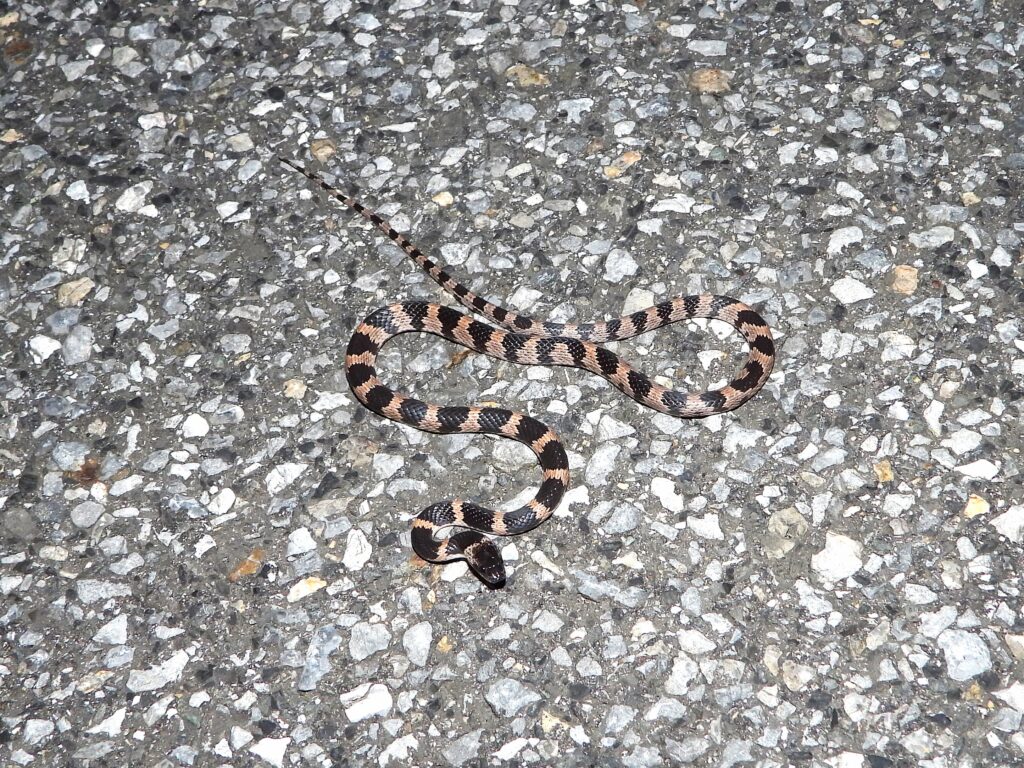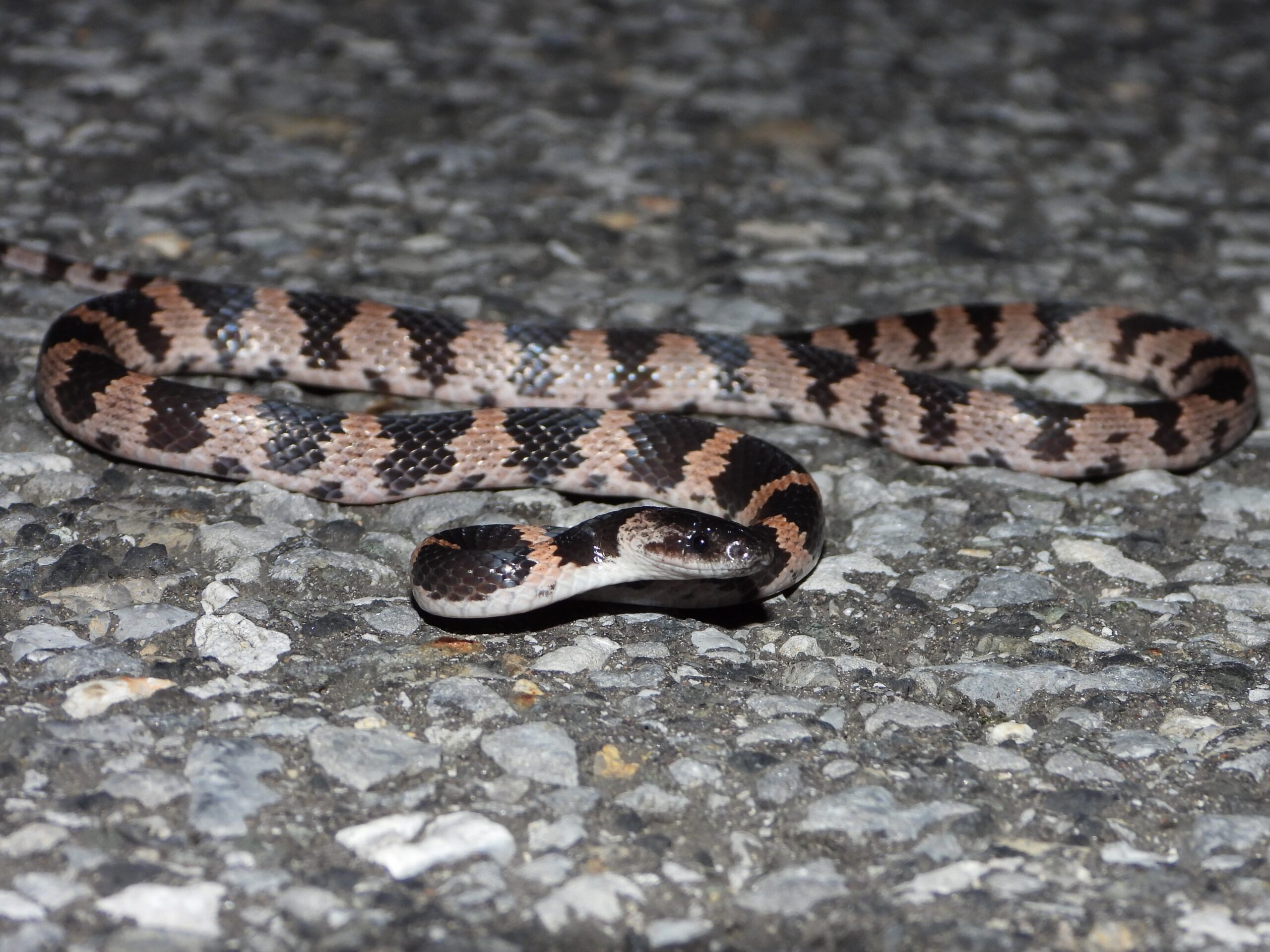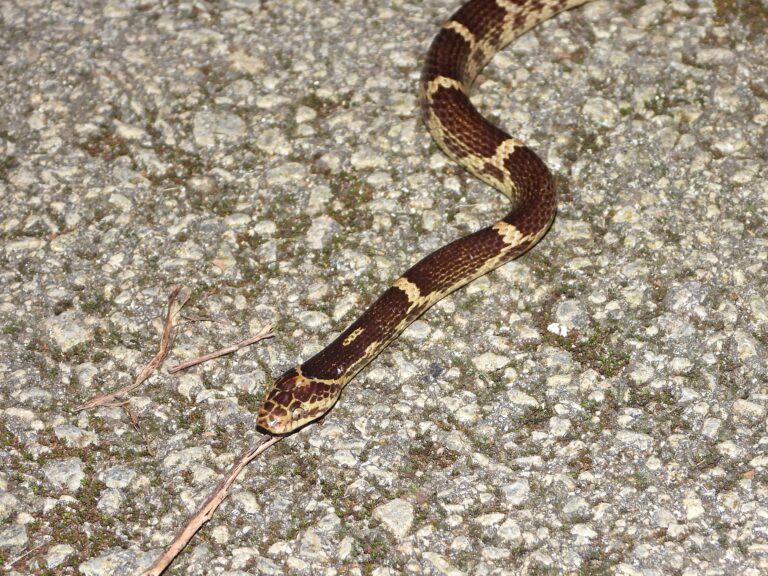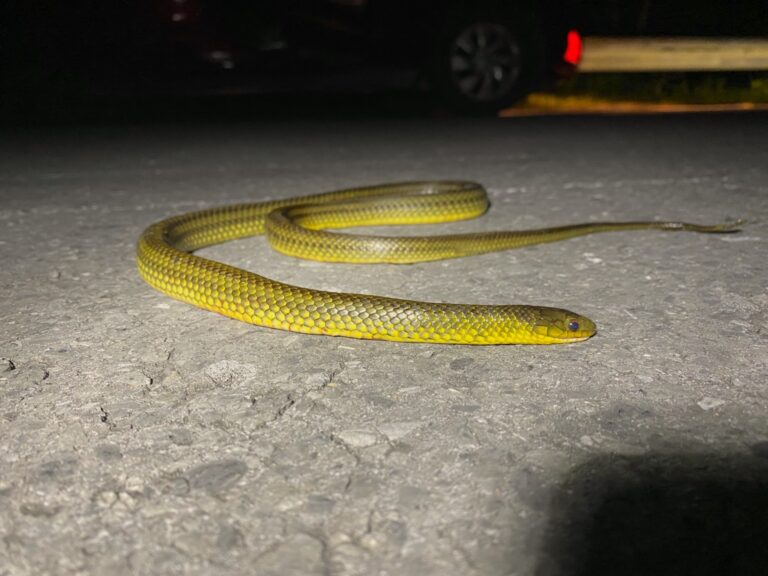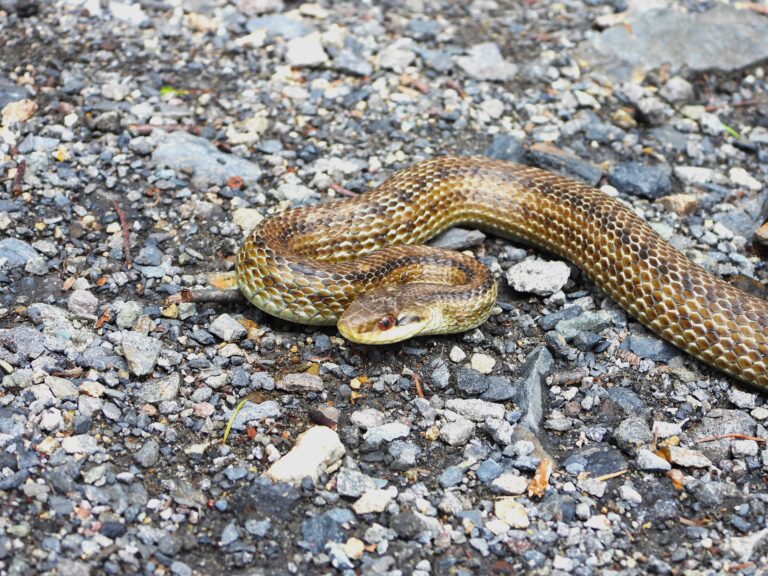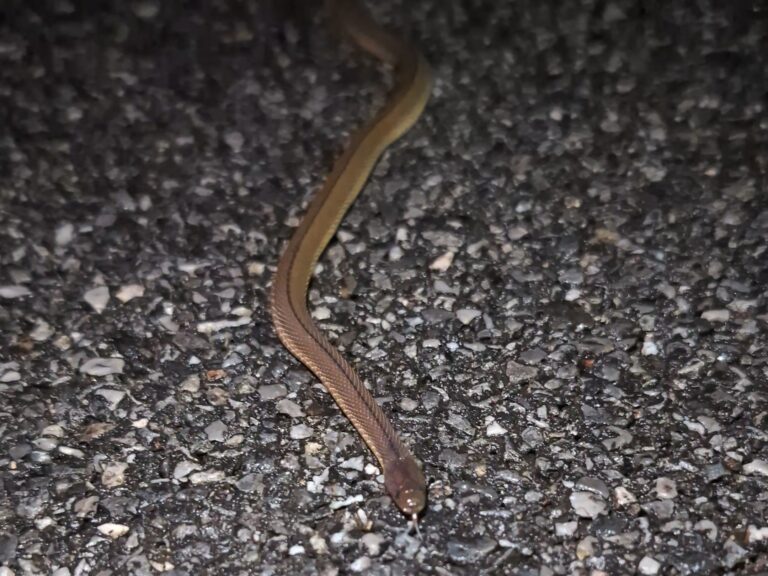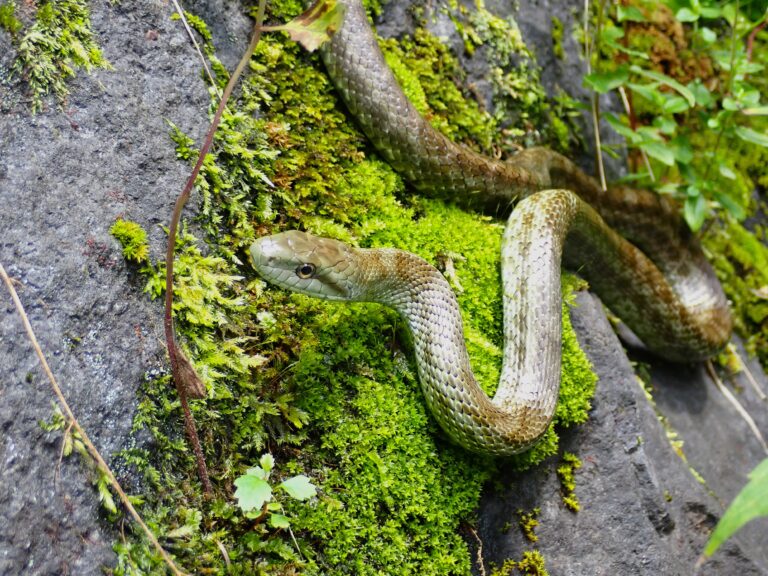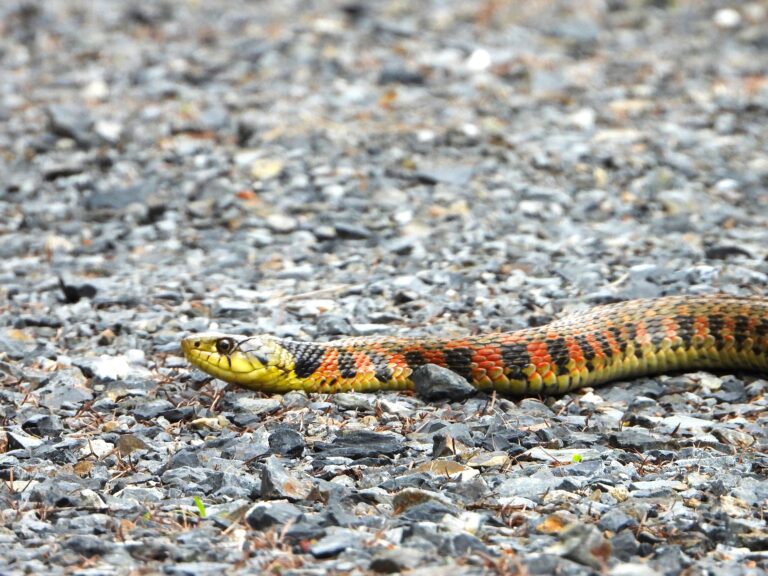Oriental Odd-tooth Snake (Lycodon orientalis) – Wildlife of Japan
Introduction
The Oriental Odd-tooth Snake, locally known as Shiro-madara, is a small, nocturnal colubrid endemic to Japan, occurring from Hokkaido through Honshu, Shikoku, Kyushu, and nearby islands. Sightings are rare because of its secretive lifestyle, but the species is more widespread than many realize.
Appearance
Adults usually measure 30–70 cm in length. The body is dark brown to black with narrow white to cream bands that remain vivid into adulthood. The scales are smooth and glossy, giving the snake a polished appearance. The head is slightly broader than the neck, marked with pale spots, and the pupils are vertically elliptical.
Habitat
This species inhabits forest floors, stone walls, and woodland edges, and is sometimes found near rural human structures. It is most often observed on warm, humid nights after rainfall, moving slowly along paths, embankments, or undergrowth.
Behavior
The Oriental Odd-tooth Snake is nocturnal and secretive. When disturbed, it prefers to hide rather than show aggression. Daytime encounters are rare and usually involve individuals uncovered from shelter. For observation, night walks with a soft flashlight along damp forest paths are most effective.
Diet
Its diet consists mainly of lizards, small snakes, and amphibians. Documented prey include the Japanese skink (Plestiodon japonicus), Japanese grass lizard (Takydromus tachydromoides), Japanese gecko (Gekko japonicus), and the Japanese odd-scaled snake (Achalinus spinalis, Takachiho snake). Recent reports also confirm predation on frogs such as Rana tagoi, showing that amphibians are part of its diet as well.
Reproduction
This species is oviparous. Eggs are laid in June–August, with clutches of 1–9 eggs. Hatchlings emerge in late summer to early autumn, with many records of young appearing in September, already bearing the same bold banding as adults.
Conservation
Globally listed as Least Concern on the IUCN Red List, the Oriental Odd-tooth Snake is locally considered Near Threatened in some Japanese prefectures due to habitat loss and its naturally low encounter rates. Regional conservation efforts are important to safeguard populations.
Author’s Impression
To me, this snake feels like a phantom of the forest floor. I often search humid summer nights without finding one, which makes each encounter unforgettable. Under a headlamp, its glossy black body and white bands stand out vividly. Unlike the bolder Japanese Ratsnake, Shiro-madara seldom shows aggression—it simply disappears into the night.
I usually search on rainy nights, because earthworms come to the surface, attracting Takachiho snakes (Achalinus spinalis), which in turn may draw in Shiro-madara. Observing this hidden predator–prey chain makes the search especially thrilling. Both species are extremely rare, so finding even one feels like a remarkable achievement.
